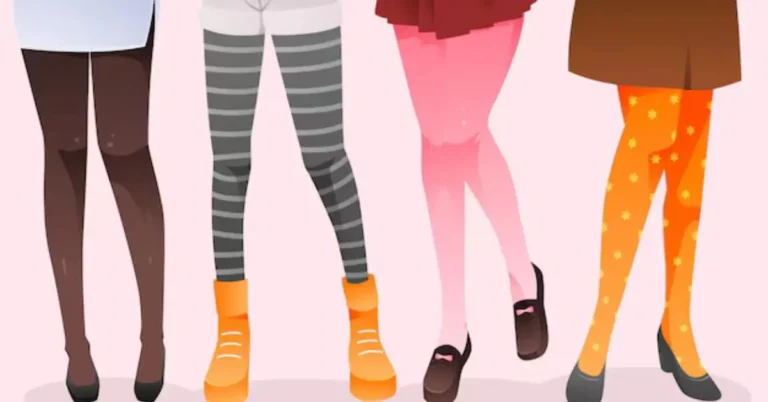Women juggle many jobs in today’s fast-paced society, whether it be taking care of domestic chores, working long hours, or maintaining an active lifestyle through fitness regimens. It is crucial to maintain good health and comfort throughout this flurry of activities. Compression socks are among the best—yet sometimes disregarded—instruments for improving circulation, lessening leg weariness, and fostering general wellbeing. These specialty socks are made to put pressure on your legs, which facilitates better blood vessel function, enhances circulation, and lowers your risk of a number of health problems.
In this comprehensive guide, we’ll delve into the many benefits of compression socks for women, explore the different types available, and provide tips on how to choose the right pair for your needs. Whether you’re an athlete, a professional who spends long hours on your feet, or someone dealing with medical conditions that affect circulation, this article will help you understand how compression socks can improve your quality of life.
What Are Compression Socks?
Compression socks are a type of hosiery that provides graduated pressure to the legs, ankles, and feet. This pressure helps support the veins, reduces discomfort, and promotes blood flow back to the heart. The concept behind compression therapy is simple: by applying external pressure, these socks help to constrict the veins, arteries, and muscles in the lower extremities, which reduces the diameter of the veins, increasing the velocity of blood flow and preventing it from pooling in the lower legs.
Benefits of Compression Socks for Women
1. Improved Circulation
One of the primary benefits of compression socks is their ability to enhance blood circulation. For women who spend long periods sitting or standing, blood can pool in the lower legs, leading to swelling, pain, and fatigue. Compression socks help to push blood back up toward the heart, reducing the risk of venous disorders such as deep vein thrombosis (DVT) and varicose veins.
2. Reduced Swelling
Swelling in the legs, ankles, and feet—also known as edema—is a common problem for many women, especially during pregnancy, long flights, or prolonged periods of standing. Compression socks apply gentle pressure, which helps to reduce fluid buildup in the tissues, minimizing swelling and discomfort.
3. Enhanced Athletic Performance
Athletes often wear compression socks to improve performance and reduce recovery time. By increasing blood flow and oxygen delivery to the muscles, these socks can enhance endurance and reduce muscle soreness. They also help to stabilize muscles during physical activity, reducing the risk of injury.
4. Prevention of Varicose Veins
Varicose veins are swollen, twisted veins that often appear on the legs. They can cause pain, discomfort, and aesthetic concerns for many women. Compression socks provide the necessary support to prevent the veins from becoming overly dilated and help alleviate the symptoms associated with varicose veins.
5. Relief from Pregnancy-Related Discomfort
During pregnancy, many women experience swelling, leg cramps, and an increased risk of varicose veins due to the additional pressure on their circulatory system. Maternity compression socks are specially designed to provide comfort and support, reducing the risk of varicose veins and helping to alleviate swelling and discomfort.
6. Post-Surgical Recovery
Compression socks are often recommended by doctors after surgery to prevent blood clots and promote healing. For women recovering from procedures like vein surgery, hip replacement, or C-section, wearing compression socks can significantly aid the recovery process by improving circulation and reducing swelling.
7. Comfort During Travel
Long flights or car journeys can lead to swollen legs and an increased risk of deep vein thrombosis due to prolonged immobility. Compression socks are an excellent travel companion for women, providing comfort and reducing the risk of developing blood clots during long trips.
Types of Compression Socks
Compression socks come in various styles, lengths, and compression levels, each designed for different needs and preferences. Here are the main types:
1. Graduated Compression Socks
Graduated compression socks provide the highest level of compression at the ankle, with pressure gradually decreasing as it moves up the leg. This type is ideal for improving circulation and is often recommended for managing conditions like varicose veins, edema, and DVT.
2. Anti-Embolism Stockings
These are a type of compression socks specifically designed for bedridden patients or those recovering from surgery. They help prevent blood clots by promoting blood flow, particularly when mobility is limited.
3. Non-Medical Support Hosiery
These compression socks offer a lower level of compression and are designed for general use, such as providing comfort during long periods of standing or sitting. They are commonly used by women who experience mild swelling or fatigue in their legs.
4. Compression Sleeves
Unlike full compression socks, compression sleeves cover only the calf area, leaving the foot and ankle free. These are often used by athletes who want targeted compression on the calves without the restriction of a full sock.
How to Choose the Right Compression Socks
Selecting the right pair of compression socks involves considering several factors, including the compression level, material, and intended use. Here’s a guide to help you make the right choice:
1. Determine the Right Compression Level
Compression levels are measured in millimeters of mercury (mmHg) and are categorized into the following ranges:
- Mild Compression (8-15 mmHg): Ideal for relieving minor swelling and discomfort, particularly for women who spend long hours on their feet or are prone to mild varicose veins.
- Moderate Compression (15-20 mmHg): Recommended for managing mild to moderate varicose veins, preventing DVT, and reducing swelling during pregnancy.
- Firm Compression (20-30 mmHg): Suitable for more severe varicose veins, managing DVT, and post-surgical recovery.
- Extra-Firm Compression (30-40 mmHg): Used for severe cases of venous disorders, including advanced varicose veins and chronic venous insufficiency. This level of compression should only be worn under medical supervision.
2. Consider the Length
Compression socks come in various lengths, including knee-high, thigh-high, and full-length pantyhose. The choice of length depends on the area of your legs that need support:
- Knee-High Socks: Suitable for addressing swelling and discomfort in the lower legs and ankles. They are the most commonly used type and are easy to wear.
- Thigh-High Socks: Provide additional support for the entire leg, making them ideal for women dealing with varicose veins, DVT, or post-surgical recovery.
- Pantyhose: Offer full leg coverage and are often preferred by women who need support from the feet to the waist, such as during pregnancy or for managing more extensive varicose veins.
3. Choose the Right Material
Compression socks are available in various materials, each offering different levels of comfort, breathability, and durability:
- Nylon and Spandex: These synthetic materials are commonly used for their stretchability and durability. They provide firm support and are ideal for everyday wear.
- Cotton: Compression socks made with cotton are soft, breathable, and comfortable, making them a good choice for women with sensitive skin or allergies.
- Wool: Woolen compression socks offer excellent moisture-wicking properties and warmth, making them ideal for colder climates.
- Microfiber: This material is lightweight, breathable, and provides a smooth, comfortable fit, making it a popular choice for athletes.
4. Consider the Fit
A proper fit is crucial for the effectiveness of compression socks. If the socks are too tight, they can cause discomfort, while a loose fit may not provide the necessary support. When choosing compression socks, measure the circumference of your ankle, calf, and sometimes your thigh, depending on the sock length, to ensure a precise fit.
When to Wear Compression Socks
Compression socks can be worn in various situations to maximize their benefits:
- During Work: If your job requires long periods of standing or sitting, wearing compression socks can help reduce leg fatigue, swelling, and the risk of varicose veins.
- While Exercising: Athletes can benefit from wearing compression socks during and after workouts to improve performance, reduce muscle soreness, and speed up recovery.
- During Pregnancy: Pregnant women can wear compression socks to alleviate swelling, reduce leg cramps, and prevent varicose veins.
- Post-Surgery: After surgery, especially on the legs, wearing compression socks can help prevent blood clots and promote healing.
- During Travel: Long flights or car rides can increase the risk of DVT. Wearing compression socks during travel can help maintain healthy circulation and reduce swelling.
How to Care for Your Compression Socks
Proper care and maintenance of your compression socks will ensure they last longer and retain their effectiveness. Here are some tips:
- Hand Wash or Use a Gentle Cycle: To prolong the life of your compression socks, hand wash them with mild soap and cold water, or use a gentle cycle in the washing machine. Avoid using bleach or fabric softeners.
- Air Dry: Avoid using a dryer, as the heat can damage the elastic fibers. Instead, lay the socks flat to air dry.
- Replace Regularly: Compression socks lose their elasticity and effectiveness over time. It’s recommended to replace them every 3-6 months, depending on the frequency of use.
Common Myths About Compression Socks
Despite their many benefits, there are several myths and misconceptions about compression socks that can prevent women from taking advantage of this valuable tool. Let’s debunk some of the most common myths:
Myth 1: Compression Socks Are Only for the Elderly
While it’s true that older adults often wear compression socks to manage venous issues, these socks are beneficial for women of all ages. Whether you’re an athlete, a busy professional, or a mom-to-be, compression socks can provide valuable support and improve your overall well-being.
Myth 2: Compression Socks Are Uncomfortable
High-quality compression socks are designed with comfort in mind. Modern compression socks are available in a variety of materials and designs, ensuring a comfortable fit for all-day wear. When worn correctly, they should not cause discomfort.
Myth 3: Compression Socks Are Only Necessary for Medical Conditions
While compression socks are often prescribed for medical conditions like varicose veins and DVT, they are also beneficial for preventing these issues, especially in women who are at risk due to factors like pregnancy, long periods of standing, or a sedentary lifestyle.
Myth 4: Compression Socks Are Unattractive
Gone are the days when compression socks were thick, beige, and unattractive. Today, they come in a wide range of colors, patterns, and styles, making it easy to find a pair that suits your taste and complements your wardrobe.
Conclusion
Compression socks are a versatile and effective tool for women of all ages and lifestyles. Whether you’re looking to improve circulation, reduce swelling, enhance athletic performance, or manage pregnancy-related discomfort, the right pair of compression socks can make a significant difference in your daily life. By understanding the benefits, types, and proper use of compression socks, you can take proactive steps toward better leg health and overall well-being.
Investing in a good pair of compression socks is more than just a health decision—it’s a step toward comfort, performance, and a higher quality of life. With the wide variety of styles and options available, there’s a perfect pair out there for every woman, no matter her needs or preferences.

